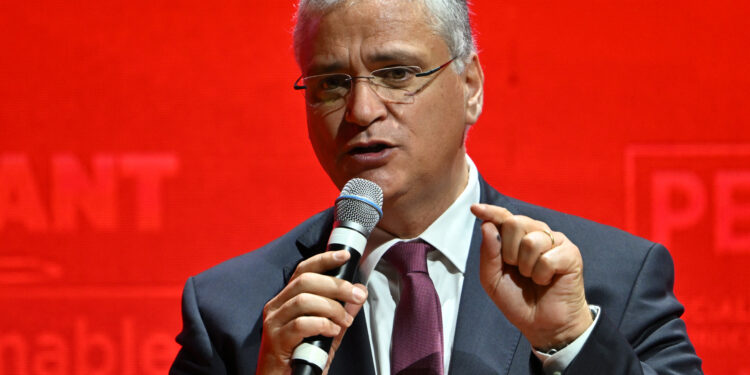Brussels – Beginning today (Oct. 7) and lasting until next Thursday (Oct. 10), the 22nd European Week of Regions and Cities kicks off. The annual event, in the Union’s capital, focuses on cohesion policy, which aims to promote convergence in socio-economic development among the territories of the 27 member states. Local authorities have already urged the incoming Commission to keep its hands off the core principles of participation, multilevel governance, and subsidiarity.
The motto of this year’s edition is “Empowering communities,” a seemingly conciliatory formula that nevertheless conceals a climate of tangible tension between the Committee of the Regions (CoR) – the body representing regional and local levels of government of member states – and the EU executive. The bones of contention are the reports on international media outlets about an imminent review of cohesion policy, which the president of the College Ursula von der Leyen would like to entrust to the new commissioner-designate for Cohesion and Reforms, Raffaele Fitto. According to information that has been circulating for weeks (never officially confirmed or denied by the Berlaymont building), there would be a move toward a substantial centralization of the management of EU funds: resources would end up in the hands of national governments instead of regional and local authorities, following the model adopted in recent years with the NRRP for the post-pandemic recovery.
However, the CoR intends to use Regions Week as a megaphone to make its opposition to this “nationalizing” reform heard loud and clear: “Erasing the role and participation of regions and cities in the future of cohesion policy is not acceptable,” said the CoR’s president, Vasco Alves Cordeiro, who wants to carry on the battle of local authorities during the upcoming negotiations for the 2028-2034 EU budget, scheduled for 2025, during the initiative’s inaugural press conference. Cordeiro sees two problems if the media reports are confirmed: the first is that regions and cities would cut out from managing European funds, and the loss of trust between them and Brussels, jeopardizing “the very future of the European project.”
The outgoing Commissioner for Cohesion and Reform, Elisa Ferreira, who will have to pass the baton to Fitto, was more conciliatory. “Cohesion policy has remained steadfast in these times, continuing to translate the Commission’s policy priorities into concrete actions on the ground, with substantial support for the green and digital transitions, as well as employment growth,” she said from the stage she shared with Cordeiro, listing a series of positive achievements by the Old Continent’s “convergence machine.”
She expressed confidence about the future of this significant chapter of EU spending, which takes about one-third of the EU budget, underlining that it must be “strengthened in terms of quality and resources.” However, she also stressed that “investments are not enough” and that “we need a strategy” for the long term to ensure all actors involved in the implementation of EU policies contribute to the overall goal of increasing territorial cohesion among the various regions. It starts with local authorities that must be involved in all of the Union’s activities as mandated by the principle of participation. For example, currently, they coordinate about 50 percent of public investment and 30 percent of public spending in member states. According to Ferreira, this principle represents “the DNA” of cohesion policy according to a bottom-up approach that puts the territory first and that must not be lost in the next budget period.
The CoR’s priorities and goals are in the State of the Regions and Cities 2024 report, which shows that the local and regional level is where European citizens place the most trust (the indicator is at 60 percent, according to the publication). The document recalls that regions and cities are responsible for implementing about 70 percent of European policies, especially regarding the green transition: “For every ten euros spent on environmental policies, eight are spent at the local level,” reads the report, from which comes a call for Brussels to provide “targeted financial support” to implement the Green deal in the order of 200 billion euros each year for climate change adaptation and mitigation measures.
Also at the center of the report are competitiveness in the single market, employment growth, and enlargement, which, according to Cordeiro, “is not only a moral duty but also a geopolitical necessity and a strategic investment in our future.” All challenges must start with territorial realities, according to the CoR, if they are to be successfully addressed. However, enlargement must be prepared carefully, the report argues, by setting up appropriate “transition mechanisms” to prevent both the cohesion policy and other important chapters of the EU budget, such as the Common Agricultural Policy (CAP), from being overwhelmed by the entry of “one or more large countries” into the European club (see Ukraine).
How? By ensuring “stable and sufficient own resources for all levels of government” even in the next seven-year budget period, in whose upcoming negotiations the Committee wants to play a crucial role. The watchword is to maintain the multilevel governance model of cohesion policy, which means keeping in place the shared management of funds that he dreaded reform that Fitto is supposed to undertake in the next institutional cycle would challenge. That is, against the “Recovery model” that hinges on having states directly manage EU funds and the reform-investment nexus. According to the CoR’s accusations, it would end up distorting the very essence of cohesion policy, namely the decentralization that in EU jargon is called “subsidiarity.”
English version by the Translation Service of Withub




